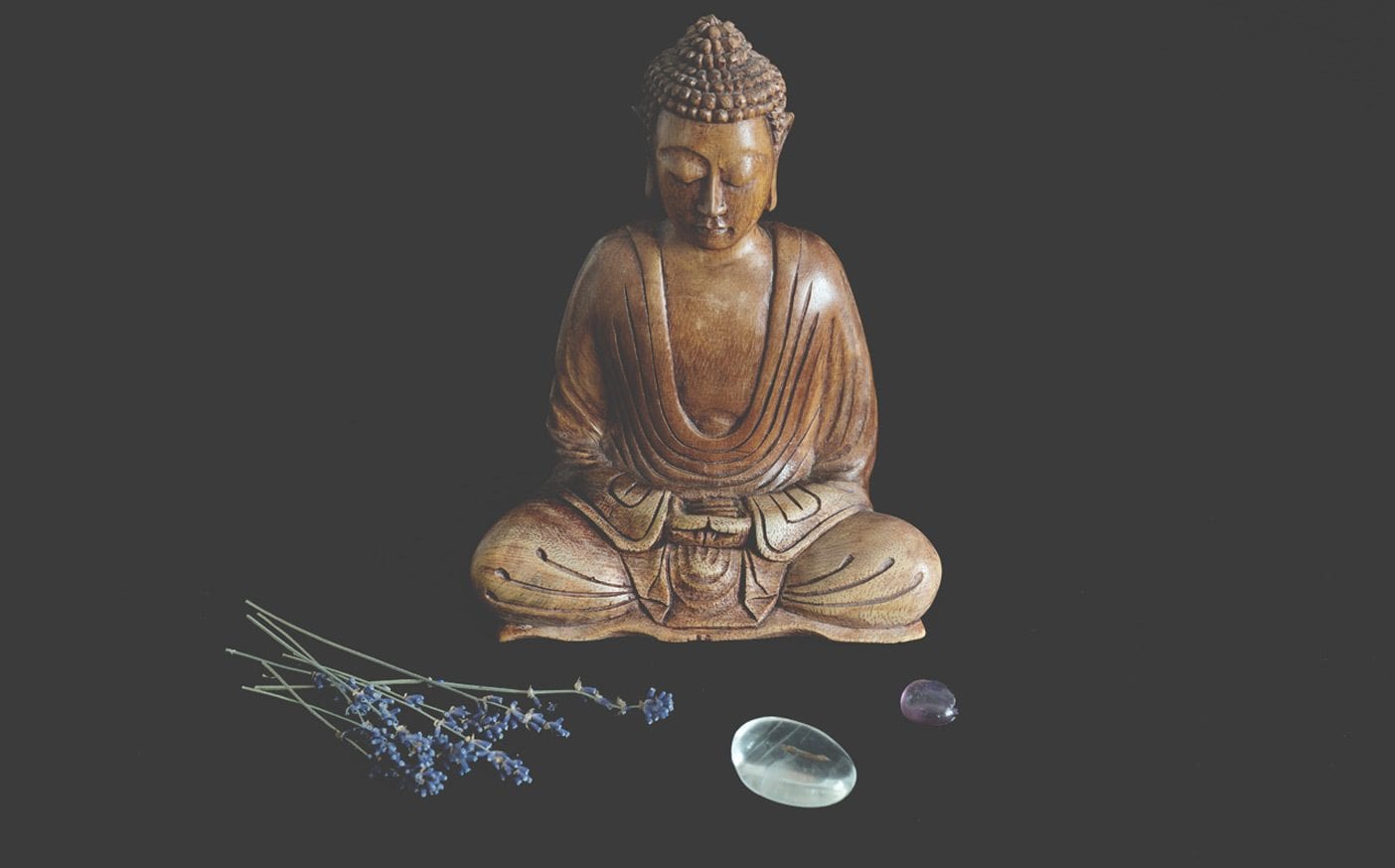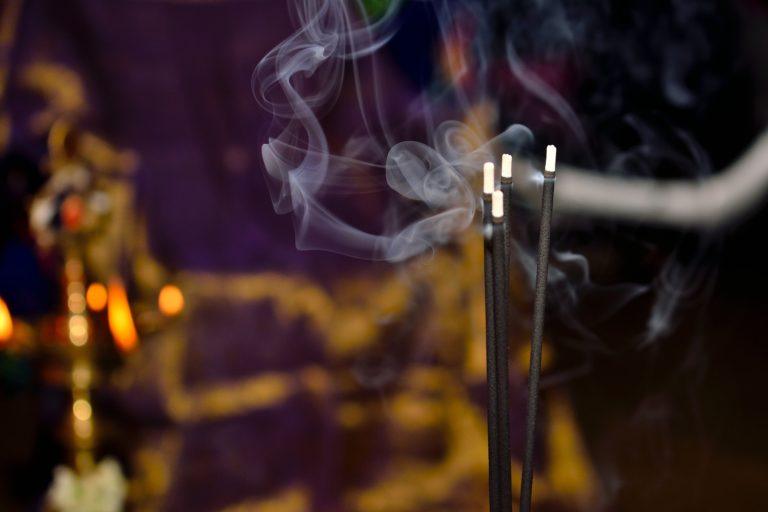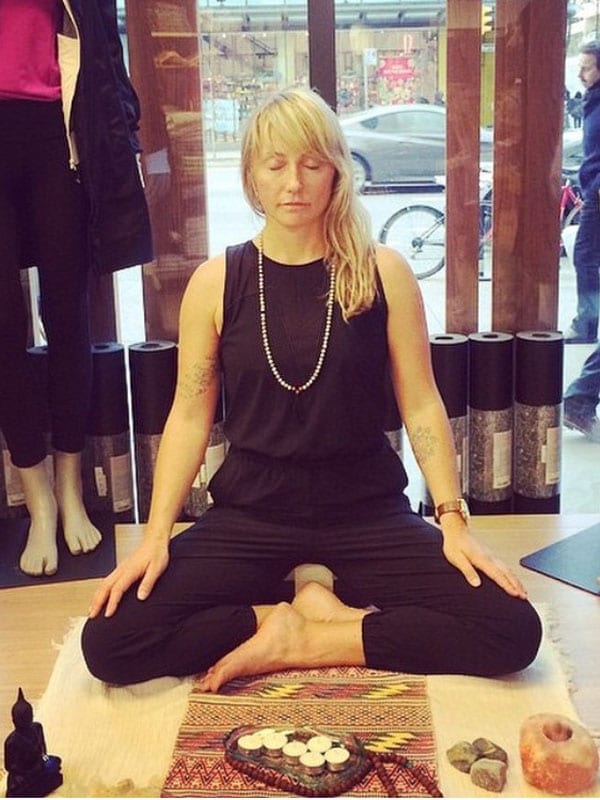
Never in a million years would I have guessed that I’d be spending my mornings writing about the power of creating altars, and my evenings meditating around them with others. But the power of intention is real, and I’ve found that practicing or meditating in front of an altar can be a great way to manifest those intentions. As we begin to turn toward 2019, preparing an altar as a dedicated space to the bounty, gratitude, and blessings in your life and where you’d like to go is a great practice to wind down the year and look forward.
Altars are not uniform across the world—though they traditionally are any kind of structure or platform where sacrifices and offerings are made. They’re not exclusive for one kind of occasion, nor are they reserved for the most spiritual among us. They come in all shapes and sizes and vary in uses across religions and philosophies. My personal use of altars crept up on me. I began to notice altars tucked away in corners at all the yoga studios I visited. I admired roadside altars outside temples. And I began to appreciate and realize that the more I meditated and practiced yoga, the more I felt a need to focus my efforts toward something.
Here we have arrived at the most important reason to create an altar: a focus for one’s efforts or heartfelt intentions. It provides a very real and very simple reminder of what is important to you and what you are working toward. The objects you adorn your altar with represent these goals and inspirations and remind us to stay on our paths. Take time to sit in meditation and decide what you would like to clear out and bring in to your life. As you create your altar, keep your intentions in mind and perhaps write them on a piece of paper to place on your altar.

Decorating Your Altar
The foundation of the altar can be a plate, tray, scarf, slab of marble or wood, or just use the floor, table, or shelf that you have. In many traditions, photos of teachers, mentors, loved ones, or other inspirations are placed on the altar. Add rocks, crystals, gems, flowers, fruit, jewelry, totem animals, singing bowls, or anything that is special and meaningful for you.
Placing a deity on your personal altar—particularly a deity whose qualities you seek—is a common practice among Wanderlust teachers. Gina Murdock, Chris Loebsack, Lauren O’Connell, and Basil Jones (“to remember that obstacles can be essential elements that help us find strength”) all have a statue of Ganesha on their altars. Bob Speck honors the spirit of Hanuman on his altar. “I look at Hanuman as the embodiment of the four yogas (Bhakti, Jnana, Karma, and Raja). I see myself more clearly when I sit in Hanuman’s presence,” he says.
Candles or incense are also common altar objects. I love the symbolism of smoke and fire—the burning away of the old, the transformation of what no longer serves, the fuel to maintain an inner power and strength. Wanderlust teacher Sally Sherman keeps it simple with “a good mat, a block for my seat, and one single candle.”
Your altar can be decorated according to each season (with the flora/fauna to accompany it), or to symbolize an element (air, earth, water, fire). Many may choose to include some sort of crystal arrangement. Taylee Wilson keeps rose quartz, amethyst, green aventurine, and clear quartz on her altar; Lauren adorns hers with rose quartz and amethyst as well, plus red jasper and citrine. Kyle Buller’s collection of rocks and crystals sit among his rattle, medicine bag, palo santo, sage sticks, feathers, candles, plants, and a little bit of tobacco. “My altar has more of a shamanic flavor to it,” he says. He isn’t the only one to bring living things to his sacred space. When asked what her altar essentials are, Nikki Vilella enthusiastically responded, “plants!”
It can be as elaborate or as simple as you like. In my house I have several altars on shelves of all sizes. They move around within my space, and some pieces travel with me on retreats around the world.
Where to Place Your Altar
Altars can be anywhere! Perhaps you set up a permanent one in a quiet corner of your home where you like to practice yoga or sit in meditation. You could create different altars weekly on a side table where you drink your morning tea and reflect upon the day ahead. Or, you could write a simple quote for remembrance on a chalkboard. Try having pieces displayed on a shelf that remind you of travels you’ve taken, and these pieces go on all your travels with you. The possibilities are endless, as are the sizes and the meanings of each altar we design.
Taking your treasures with you when you travel is important to Wanderlust teacher Joe Barnett. “I have a little packet of items that are dear to me. I set them up wherever I land,” he says. “It is a constantly rotating series of items that have been gifted to me or found in the outdoor spaces where I practice. Currently this includes Snufkin + Stinky from the Moomins (a Finnish children’s book), the Angel De La Guarda that was handed to me by a passing stranger in Mexico City, a sacred (yet common) coin given to me by my students in Japan, and stones from various magical places. These items are wrapped in cloth for traveling.”
Whether to deepen your connection to prayers, to the divine, to the source, or to love, altars are a beautiful symbol of our cycles: from inspiration from our pasts, to the abundance in our futures. They hold our intentions, and when we are ready, we let them go and move toward a new altar with new intentions.
—
 Carolyn Anne Budgell (BA, ERYT 200, Kula 75) loves teaching vinyasa yoga and meditation from a realistic, down-to-earth, and light-hearted perspective in Vancouver, BC. Carolyn discovered yoga in 1999 as a ski bum in Whistler and now leads Yoga Teacher Trainings for Wanderlust Festival and Lila Vinyasa School of Yoga, created free online yoga classes as an Ambassador for lululemon, and has mentored at teen girl yoga camps to increase female empowerment (Girlvana). Check out her website for free meditations and real talk blog posts.
Carolyn Anne Budgell (BA, ERYT 200, Kula 75) loves teaching vinyasa yoga and meditation from a realistic, down-to-earth, and light-hearted perspective in Vancouver, BC. Carolyn discovered yoga in 1999 as a ski bum in Whistler and now leads Yoga Teacher Trainings for Wanderlust Festival and Lila Vinyasa School of Yoga, created free online yoga classes as an Ambassador for lululemon, and has mentored at teen girl yoga camps to increase female empowerment (Girlvana). Check out her website for free meditations and real talk blog posts.